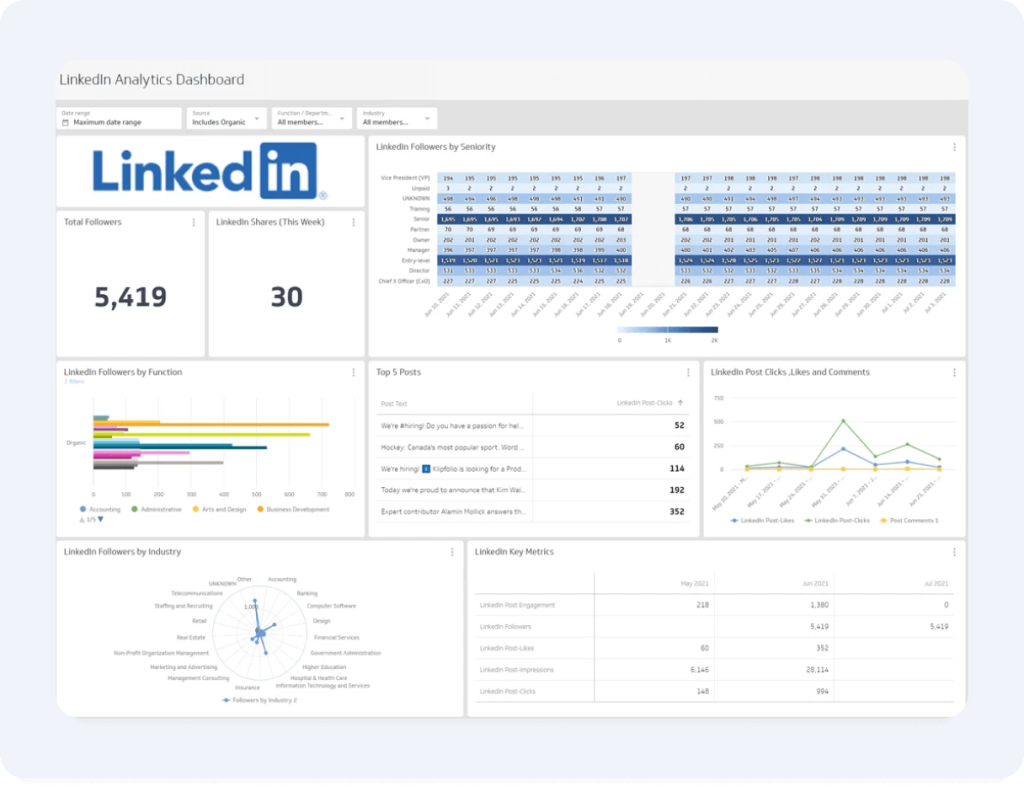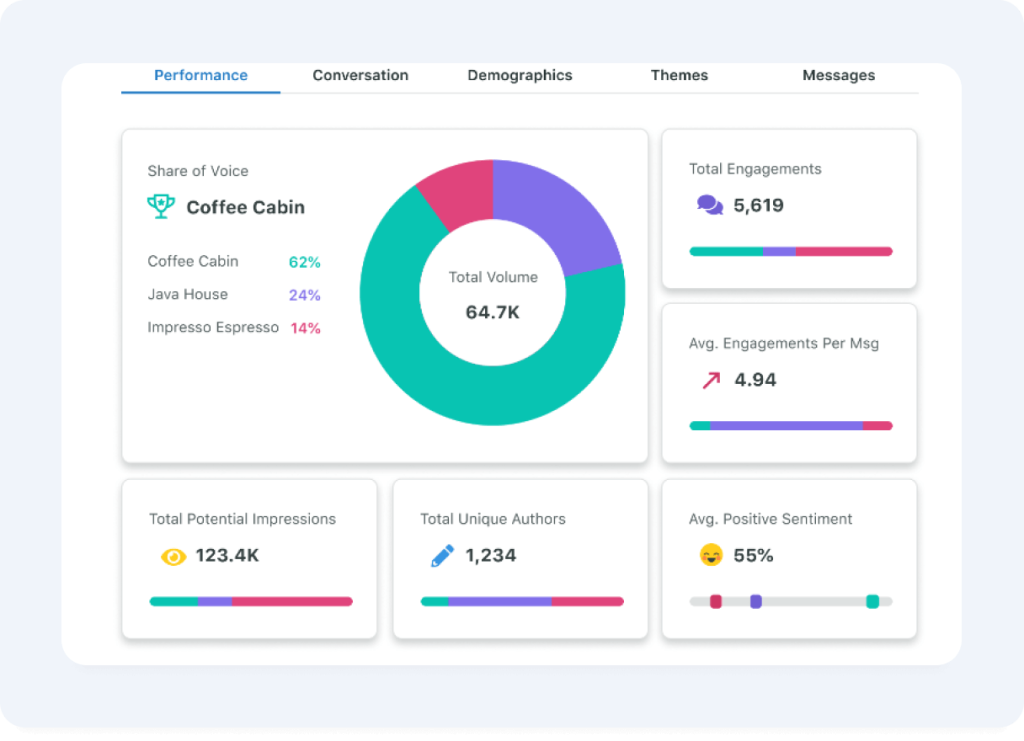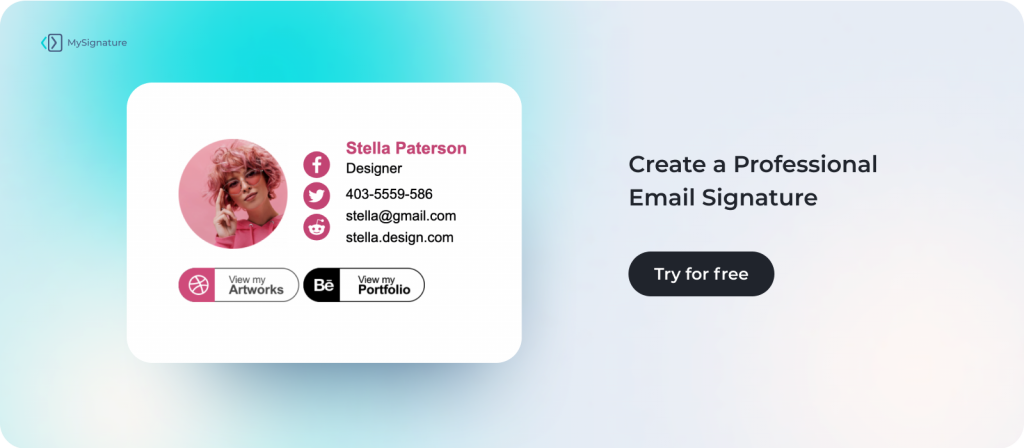LinkedIn is a powerful tool for market research, whether you’re trying to expand your business or understand your competition. This article will show you how to use LinkedIn for market research, learn more about the audience, and gather intelligence on your rivalry.
Why Utilize LinkedIn When Researching the Market?
LinkedIn is brimming with valuable insights and connections, which can show you what’s buzzing in your field. Using this platform, you can learn from the best and spot new opportunities before they become mainstream. It’s a place to share, ask questions, and get real-world advice that can make a difference in your business decisions.
This business platform contains many articles, blog posts, and expert opinions. It’s a library that’s always up-to-date with the latest trends and tricks of the trade. You can find insights to implement and get a leg up on your competition. Plus, keeping an eye on trends on the platform can give you a sneak peek into where your industry is heading and how to take advantage of it.
In short, LinkedIn offers straightforward tools and a community geared toward making your business journey more navigable and manageable.
Paying Attention to Audience Insights
Tapping into the LinkedIn Audience Insight feature (LAIs) provides a detailed look at who’s checking out your business online. Think of this feature as your brand’s backstage pass to understanding your demographics, from job titles and industries to where they hang out geographically. This roadmap shows how to tailor your approach to meet your audience’s needs. Its ability to show how your audience interacts with your content makes it valuable. Whether they lean more toward quick, engaging multimedia or spend time diving into longer reads, you can use this information to get more data and build a typical customer profile.
A well-designed persona allows you to build different touchpoints and remain visible on multiple channels. You could, for instance, get people’s email addresses for newsletters and reward them for signing up with a meaningful bounce-back. Use a Vista Create Postcard Maker to design unique e-postcards or get printouts for individual sharing, as a business promo or personalized deal.

Learning this can help you shape your content strategy to keep people hooked, enhancing engagement on your page. The feature can cast light on who’s interested in your business, what captures their attention, and how industry trends might affect their interests. This, in turn, can help you make informed decisions and secure ongoing development.
Examining Content and Evaluating LinkedIn Mentions
LinkedIn’s content analytics tools allow you to see how your posts perform and understand what content resonates with your audience, guiding your future content creation.
Here are a few steps for conducting a practical LinkedIn analysis:
- Make sure to select an appropriate period for your analysis. If you want to see how your content is performing over time, make sure to choose a long enough time frame so that you can see any trends that emerge.
- While overall performance metrics are valuable, examine the details of top-performing posts to get rich insights. Identify which posts garnered the most engagement or reached the widest audience and analyze them to reveal what type of content your audience prefers.
- Use LinkedIn’s profile analytics to understand how your page is performing and identify ways to improve your visibility on the platform. This includes optimizing your profile for keywords, adjusting content, updating profiles such as your LinkedIn Banner and ensuring it is up-to-date.
- Keep track of how engagement levels change over the selected timeframe. Notice any spikes in interaction and try to correlate them with publications and other relevant parameters. It will help you time posts and align with the audience’s interests.

Another way to research the market is to evaluate LinkedIn mentions. Evaluating LinkedIn mentions is an insightful and dynamic way to tap directly into the market’s pulse. As conversations on LinkedIn often revolve around professional experiences, industry trends, and corporate achievements, understanding how your business or product fits into these discussions can offer a wealth of strategic insights. Make sure to delve into:
Conducting a Search
Utilize LinkedIn’s search functionality to track mentions of your business or products. Input your business name or product into the search bar. This initial search will pull up a broad array of content related to your search query, including profiles, content posts, and more.
Filtering Results
For more precise results, leverage LinkedIn’s filtering options. By clicking the “More” button and selecting “Posts,” you can narrow your search to specific content mentions. From there, apply the Advanced Search filters such as time frame, geographic location, or language to hone in on the most relevant discussions for your market research needs.
Beyond Monitoring: Engaging and Responding
While monitoring mentions offers critical insights, taking an active role by engaging with these mentions can further benefit your business. Pay close attention to the context in which your business or product is discussed. Are customers sharing positive experiences, or are they pointing out areas for improvement? Is there a common theme among the mentions that could indicate a broader trend in customer sentiment? Each post can provide valuable insights for building a more profound marketing campaign and outreach strategy.
Not only examining but responding to customer posts can also show that your business values feedback and is committed to fostering positive relationships with its audience. Positive mentions can help you identify brand advocates or influencers within your industry.
Negative mentions are just as beneficial, and you should take them as opportunities to elevate your brand. On the surface, they may look detrimental. In reality, however, they provide a chance to address concerns promptly and transparently, potentially turning a dissatisfied customer into a loyal advocate.
Mentions can give you a peek into how the market perceives your competitors. This competitive intelligence is invaluable for benchmarking and understanding your unique value proposition (UVP) in the industry. Practicing this step is a mindful and strategic approach to understanding market needs. A thorough analysis with proactive engagement and strategic improvements will allow you to leverage LinkedIn mentions, fine-tuning your market presence while strengthening your brand reputation.
Analyzing Competitors
Competitor analysis (CA) is another critical way to research the market using LinkedIn. The reason for using CA is to understand your rivals’ market position, culture, and strategic focus. You can utilize different strategies to check where others stand, what they offer, where they shine, and where they miss out on so you can seize the opportunity and act immediately. From monitoring activity and analyzing networks to leveraging insights, there’s no shortage of ways to study the market and unveil its intricacies. As an entrepreneur, you can do a few things to learn more about the niche.
First and foremost, keep tabs on the types of content your competitors are posting, their engagement rates, and the frequency of their posts. Analyzing these aspects can provide insights into the effectiveness of their content strategy and audience engagement level. Say the industry is teeming with video content. It might mean that users prefer this type over text-based content. The latter can also be profitable, but you need to find the right approach. Check which content generates high engagement to understand what resonates with your shared target market and what else you can do to win its attention.
Besides, review the profiles and activities of key employees, especially those in leadership or strategic roles. Their posts, articles, and shared content can offer clues about the company’s direction, upcoming projects, or strategic priorities. Businesses often experiment with content forms by rolling them through employee’s pages. It’s a mindful way to test the waters with new content and avert potential risks.
Using LinkedHelper automation, engage with individuals who have shown interest in your competitors’ content by liking or commenting, leveraging this opportunity to attract them to your brand. Understanding their network can help you identify market segments they are zeroing in on, which you, in turn, might not know of. Plus, it can show potential partnerships and help you predict what to anticipate from the competitors. You can find plenty of tools for a detailed CA, compiling metrics from other companies and showing how well they perform.

Based on your analysis, pinpoint areas others aren’t effectively addressing. A breakdown of branches presents an opportunity for your brand to enter these gaps as the trailblazer and differentiate yourself in the market. Craft a UVP to address those gaps and meet customers’ needs. Remember to consistently communicate your value proposition and what sets you apart. It will help build brand recognition and give you a headstart over others, especially in areas where they fall short.
Perusing hashtags
Utilizing hashtags can help find conversations about specific topics, discover new content, and see what people say about trending subjects. You can use those advanced search features mentioned earlier to filter hashtags by location or language to get even more targeted results.
Once you’ve found a few relevant hashtags, you can follow them to see new content in your feed. You are also encouraged to use niche-specific hashtags rather than general ones and a mix of popular and less popular hashtags. This playground has no strict boundaries, so you’re encouraged to try various ways to improve your industry expertise and build a long-term strategy.
Bottom Line
As the largest professional social network, LinkedIn is a solid tool for market research, enabling you to connect with potential clients and learn about their preferences and wants. Other than clients, you can raise awareness about your competition and where you stand in it. Understanding your current place within the industry and recognizing the dynamics are crucial for navigating market trends and customer demands while effectively streamlining your business operation.
Integrating LinkedIn into your market research toolkit accelerates your ability to adapt and innovate. Coupled with advanced software solutions, you can transform market research from a periodic task into an ongoing strategic function. Doing so will help you remain agile, responsive, and aligned with customer expectations.



